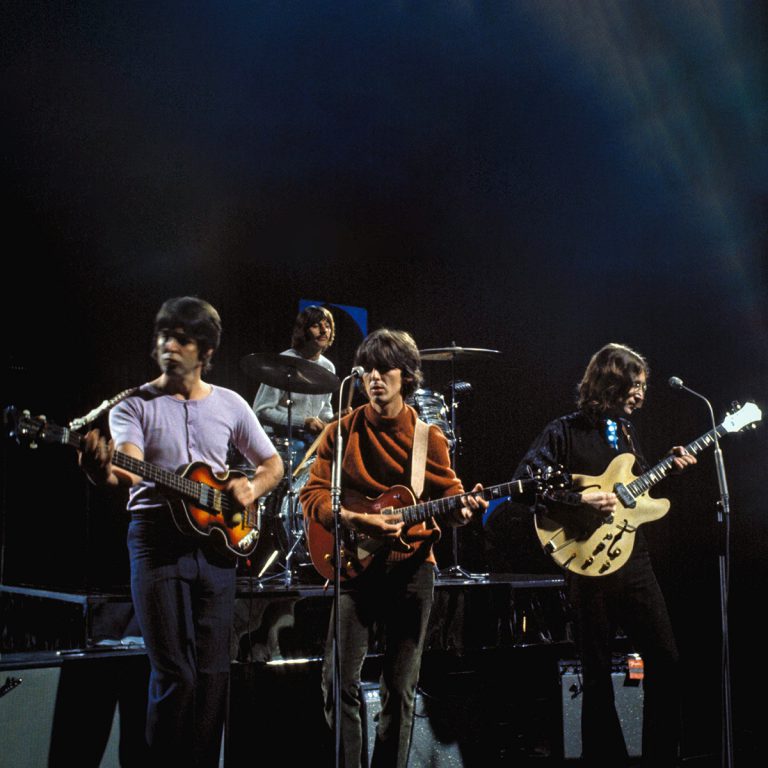
Thursday, September 26, 1968
Apple books the Royal Albert Hall for a potential Beatles live performance
Last updated on September 6, 2024

Thursday, September 26, 1968
Last updated on September 6, 2024
Previous article Sept 24, 25 or 26 - Oct 20, 1968 • Linda Eastman visits Paul McCartney in London
Session Sep 24, 1968 • Recording "Happiness Is A Warm Gun"
Session Sep 25, 1968 • Recording and mixing "Happiness Is A Warm Gun"
Article Sep 26, 1968 • Apple books the Royal Albert Hall for a potential Beatles live performance
Session Sep 26, 1968 • Mixing "Happiness Is A Warm Gun", "What's The New Mary Jane", "Glass Onion", "I Will"
Article Sep 28, 1968 • "The Beatles" double-album is announced
Sep 14, 1968 • Paul McCartney hints at a Beatles' live TV show project
Sep 26, 1968 • Apple books the Royal Albert Hall for a potential Beatles live performance
Nov 06, 1968 • News reports the Beatles' live TV show would be recorded in December 1968
December 1968 • More details and rumors about the Beatles’ live TV show project
Jan 02, 1969 • Get Back sessions • Day 1
January - February 1969 • First mentions in the press of the “Get Back / Let It Be” sessions
First mentions in the press of the “Get Back / Let It Be” sessions
January - February 1969
On September 14, 1968, Paul McCartney announced to music magazine Melody Maker that The Beatles “will be doing a live TV show later in the year“
On this day, according to Barry Miles in “The Beatles Diary Volume 1: The Beatles Years“, Apple booked the Royal Albert Hall for several days in December, in preparation for a possible live performance by The Beatles, alongside other Apple artists like Mary Hopkin and Jackie Lomax.
The New Musical Express reported this news in its October 5, 1968 edition.
This idea to use the Royal Albert Hall would be called off on October 12, 1968, in various press articles.
BEATLES CONCERT REPORT
The NME understands that via their Apple Company, The Beatles have booked the Royal Albert Hall, London, for a live concert in December.
There are reports that other Apple artists – possibly Mary Hopkin – will also take part.
If finalised, the London date will be the Beatles’ first performing public appearance in Britain since the NME concert at Wembley on May 1, 1966.
Recently Paul McCartney has been quoted as saying he would like to perform on stage again, following the reaction to the in-person TV appearance of the Beatles singing “Hey Jude“.
No confirmation of the concert was available from Apple as the NME went to press this week, however.
From New Musical Express, October 5, 1968


In its October edition, The Beatles Monthly book also made an article about this project:
MORE LIVE TELEVISION
After performing “Hey Jude” and “Revolution” in front of videocolour cameras at Twickenham film studios, the Beatles are keen on the idea of filming or videotaping a full-length television show.
Unlike “Magical Mystery Tour” – which used pre-recorded singing and playing which they put on tape in the recording studio beforehand the type of TV show the boys have in mind would involve the filming of actual
live performances given in front of an invited audience. As with the “Hey Jude” videotapes, there could be plenty of audience participation.In other words the aim would be to present on television what might amount to a Beatles concert—but instead of the audience being limited to several thousand at a single theatre or stadium the TV programme could be made available for screening throughout the world.
Comments Beatles’ Press Representative Tony Barrow: “It is true that this new line of thinking proves once more that the fellows are not against the idea of giving stage performances as such. It doesn’t mean they are
From The Beatles Monthly Book, October 1968, N°63
going to start touring again but 1 can see them playing somewhere like the Royal Albert Hall and other major venues where they can install really good sound systems“.

Music magazines gave various updates on this “live TV show” project between September 1968 and early 1969. The project would morph a few times and would lead to the “Get Back / Let It Be” sessions in January 1969, the Beatles’ last live performance on the rooftop of the Apple building, and the release of the “Let It Be” film in 1970.
Timeline of events:
The Beatles Diary Volume 1: The Beatles Years
"With greatly expanded text, this is the most revealing and frank personal 30-year chronicle of the group ever written. Insider Barry Miles covers the Beatles story from childhood to the break-up of the group."
We owe a lot to Barry Miles for the creation of those pages, but you really have to buy this book to get all the details - a day to day chronology of what happened to the four Beatles during the Beatles years!

Notice any inaccuracies on this page? Have additional insights or ideas for new content? Or just want to share your thoughts? We value your feedback! Please use the form below to get in touch with us.